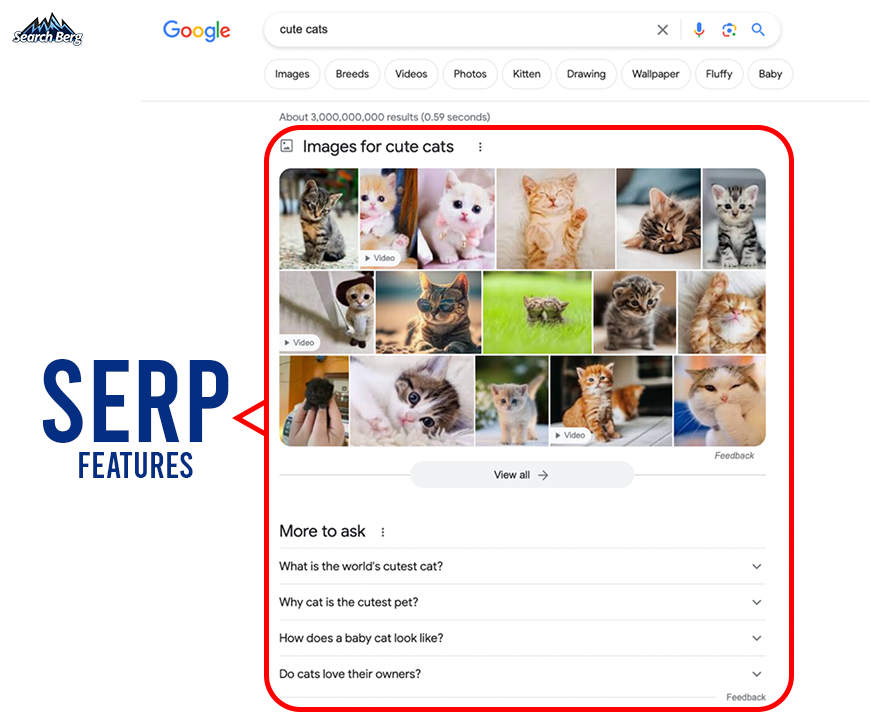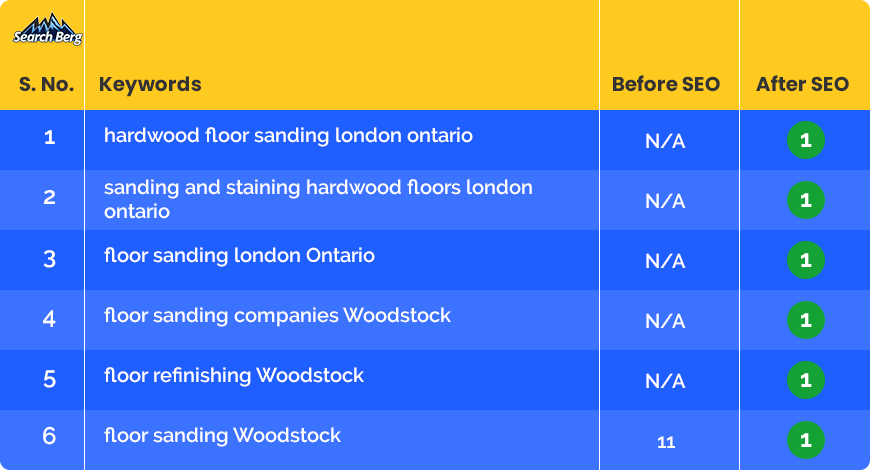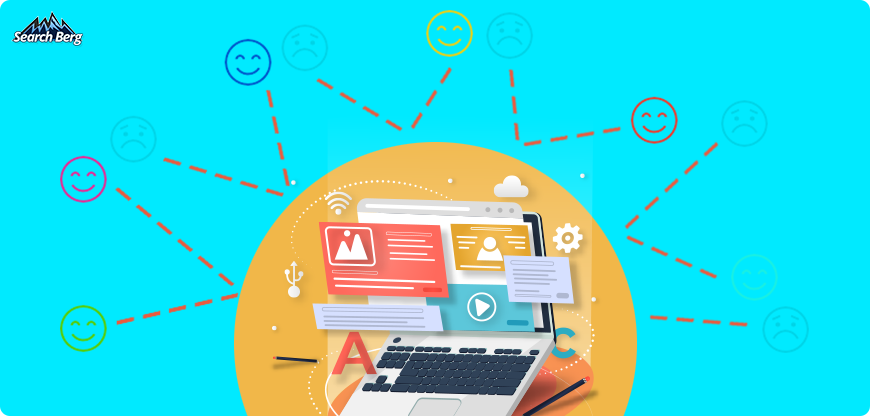Google SERP Tracking 101: How to Monitor and Improve Your Ranking
Rising Through the Ranks—Or Just Tanking?
Everyone seems to be interested in reaching the number #1 spot on Google, whether it’s a marketer who’s just entered this dog-eat-dog world or a business owner who’s just learned the significance of good SEO and SERP rankings.
You might be doing everything by the book, including optimizing web content, creating a powerful PPC ad campaign, and adding quality backlinks—but that still won’t drag you from page 20 to 1 overnight. But seeing as how the #1 result on Google gets 34% of all organic traffic, it’s a valid aspiration to have.

It’s a long-winded process that comprises multiple steps and stages in order to succeed both in the long and short run. So, let’s get into the basics of SERP tracking and monitoring and how you can get your name up there in the big leagues.
Wait, What the Heck is SERP Tracking?
A visual cue such as your apparent manual ranking on Google can give you a general indicator of where you stand and how you’re performing. But it’s not an accurate indicator.
You need expertise and analytical tools to track SERPs accurately because they account for organic results and PPC advertisements simultaneously, with most viewer traffic concentrated on the first page.
Think about it as a user yourself: when you can get dozens of results in less than a second that match exactly what you’re looking for, would you go to the second, third, or fourth page to find what you want? Probably not.
Without a clear understanding of your competitors’ chosen methods, techniques, and strategies, you’re unlikely to make real progress with SERP rankings.
In addition to looking at their chosen methods, you need to look at your own search engine visibility to know exactly how many people are able to view your website on these results pages.
But in recent years, as consumer behavior has changed, technology has evolved and transformed, and SERPs have become more dynamic and engaging. Modern SERP tracking tools now cover a variety of results and outcomes, including:
- Images and videos
- Tweets (now called X posts)
- Guides and reviews
- Similar products
- Business information
- Related products and services (for those who are super clever with their optimization)
Your standard SERP looks like this when you ask for results:

Why do SERPs track and display this information, though? How is it benefiting consumers? And why do you need to care about all of these different results? Why are all these images and video links showing up before the information you truly want?
The answer: SERP categories.
SERP Categories Simplified: What They Are and Why They Matter
SERP categories seem like an unnecessary complication. After all, you really just want your website noticed, so you can also enjoy the 39.8% of all CTR by being number 1.
However, the truth is a little more complicated than that, with varying categories shaking up the playing field. Most results displayed on SERPs can be divided into the following categories:
1) Organic Results
These are the results we typically view and aspire toward ranking on. They contain the most basic information, such as your website’s metadata, description, and, obviously, links. They’re directly related to your optimization efforts and how effectively long- and short-tail keywords have been used.
2) Paid Results
Paid results, on the other hand, are what we know as PPC ads and marketing. These are results that have been generated after bidding on keywords and ranking higher for them—and tracking Google SERPs reveals how effective paid results can be for businesses.
3) Rich Results
Also known as rich snippets, these are SERP features that enhance existing results through aforementioned add-ons like images, reviews, ratings, multi-media, etc. Sometimes, they may comprise news snippets, trending information, and other visual indicators that make your business more noticeable to viewers.
4) Global or Universal Results
Slightly different from rich results, global or universal results offer a deeper, more versatile insight into SERP contents, including other features and functions like news, maps, and even shopping.
In short, any time a user enters a keyword, SERPs will factor in all of these variables to generate a result—which means simply optimizing and bidding won’t suffice any longer.
A great instance of that is one of our top clients ABC Floor Sanding, who benefited immensely from our ongoing SEO efforts to improve their Google search ranking. Through continual, varied strategies and consistent SERP tracking and monitoring, we were able to get them ranked number 1 for 8 keywords, and on 2 and 3 for 10 others.

You could say we sanded down the competition with our efforts—pun intended!
Here’s a quick result of the current SERP page when searching for “hardwood floor sanding in London, Ontario,” which displays the client right on top as a paid result:

And here’s one of another keyword, “floor sanding in London, Ontario” where they are ranked #1 on the organic results list:

It does take a combination of methods and techniques, both SEO-based and PPC-related, in order to generate the results and dominate SERP rankings, which is exactly what we’ll guide you on.
Recommended Read: PPC Management with Google Ads: A Step-by-Step Guide
8 Crucial KPIs to Use for Tracking SERP Performance
Key Performance Indicators (KPIs for short) are simple metrics that indicate and display what works for you and what doesn’t.
Our team uses a variety of KPIs to evaluate which components and elements of your SEO and PPC Strategy to evaluate how they affect your rankings on Google and other search engines.
Recommended Read: Guaranteed SEO Strategies: How Experts Dominate SERPs and Drive Traffic
By using a multitude of KPIs, including the following, we’re able to identify what’s working in favor of your rankings and what’s hurting or dragging them down. It offers a clearer insight into the changes that we need to make and allows us to holistically track, monitor, and figure out how to organically rank on Google.
Organic Traffic and Its Various Sources
Organic traffic is a term you’ll frequently see floating around in SEO circles (guilty), and is responsible for 53% of a website’s traffic. But if you’re not sure what this is, let’s get right to it.
Organic results are those phrases, queries, questions, and terms that your target audience members enter into different search engines. For instance, “high-performance running shoe” or “best nail salon near me.” These phrases are based on user intent, and SERPs use them to display all relevant, optimized results for users to browse through.
If your website receives a significant amount of organic traffic, in general and based on specific keywords, chances are that you’re kicking ass in that area.
We use multiple analytics tools and programs to evaluate your organic traffic performance and enhance that using a variety of methods such as content generation, backlinking, keyword optimization, on-site SEO, and more.
Recommended Read: SEO Content Guide to Search Engine Ranking Factors

Keyword Ranking and Performance
Keywords are the heart and soul of any SEO strategy and are crucial in determining your ranking. We use SERP tracking tools to evaluate keywords based on their performance, relevance, and efficacy.
You can even test it out yourself to see where your brand lands on the SERP for your chosen keywords—and while results may not always be pleasant or desirable, we can take care of that for you.
Through detailed SEO audits, keyword tracking and monitoring, and other methods, we’ll identify the highest-performing keywords both locally and beyond. Our revised keyword strategy will identify which keywords are doing well presently for your business, as well as competitors, based on local trends, industry trends, and user intent.
We’ll also take a step further to identify which keywords aren’t being leveraged and help you incorporate them seamlessly to put you a cut above the rest. With effective optimization strategies, keyword-specific content, and consistent tracking, we’ll have you soaring through the SERPs in no time like Discount Golf, a client who saw a 296% increase in their Top 3 keywords!
Clickthrough Rates from SERPs
We know that it’s not just enough to have your website show up to get the job done. You need a little bit more from your strategy.
Your clickthrough rate (CTR) is another major indicator of your SERP ranking, and you could very well be pulled down if an insufficient number of people are actually clicking on your website. The higher your ranking, the higher your CTR, with organic results at number 1 getting 39.8% of all clickthroughs.

As you can see from the screenshot above, your paid content is right on top but lists several brands that may not be appealing to consumers who want THE best. That’s where Adidas dominates the SERP as the number 1 choice and is likely to get the majority of clickthroughs from audiences.
Does that mean their product is the very best in the market? Some might argue that it’s not. But what it sure as hell means is that their SEO is killer.
Bounce Rates After Clickthrough
We know that the CTR is an important indicator of SEO performance and that you definitely need it—but it doesn’t end there. Sigh, we know.
After users click your URL and visit your website, they should be engaging and interacting with it in some way. Failure to do so before they shut it down and move on can hurt your SERP rankings. This is known as the bounce rate.

So SERP monitors tend to examine the bounce rate your website has, and through extensive expert analysis, we can identify what is contributing to it and how to rectify that. Whether it’s content quality, website copy, layout and design, navigation and flow, or other factors such as your page speed, you have to get to the bottom of this.
Today, content is king, and users want everything at their fingertips in seconds, and if you’re unable to deliver that, they’re going to bounce—literally.
Page loading time is one of the most significant factors to address in order to improve bounce rates, and thus SERP rankings since the first 5 seconds determine conversion rates.
Time Spent On Your Page
Since we’re on the subject of page loading times and bounce rates, don’t underestimate how much time users are spending on your website.
While you want your website to be optimized and load as fast as possible to minimize bounce rates, and want users to navigate it quickly and efficiently, you also need them to engage with your site and spend more time on it.
Kind of confusing, right? But think about it like this: you want them to spend time on your page because it’s GOOD and they’re hooked—not because it’s crappy, slow, and they can’t find what they need.
A solid home page, great quality landing pages, effective keyword optimization to locate information, gripping visuals, fast loading times, and killer content are the ultimate recipe for SERP success.
Domain Authority for Your Website
Domain Authority (DA) is another excellent determining factor for your rankings—kind of. Domain authority can change over time depending on how thorough your SEO strategy is and can range from 1–100.
While it’s not something that will boost your Google ranking on its own, your DA score factors in multiple qualities and features related to your general SEO practices, which, in turn, are indicators of your rankings. The more your DA score improves, the better your website is likely to perform, even if search engines like Google do not use it as an internal metric.
Backlink Performance and Quality
Backlinks are the backbone of SERP rankings. They are one of the most important criteria, considering that pages that rank at number 1 on Google SERPs have 3.8x more backlinks than their competitors.
But remember that not all backlinks are good for you, and you need SERPs tracking tools and backlink audits to identify gaps in your strategy.

We’ll help you remove spammy links and irrelevant backlinks that have nothing to do with your business and upgrade your strategy using a multitude of link-building approaches, such as Guest Posting and industry connections, and fix broken or unmentioned links.
Recommended Read: 10 Types of Backlinks and How to Create Them
Overall Conversion Rates on Your Website
Lastly, you need to look at conversions on your website.
Conversions can be as wide as generating more clickthroughs, or as narrow as increasing the number of sales through SEO campaigns. Using conversions as a KPI of your SEO strategy and, thus, SERP rankings is a clever approach because it shows you which actions are working and leading to outcomes you want and which ones are not.
To do this, you need to set specific conversion goals, such as increasing clickthroughs from SERPs, signing up for different services, or receiving marketing content, form submissions, purchases, and so on.
Our team will help you evaluate and set these goals and track them closely, adapting your approach and SEO strategy to help you generate more conversions via higher rankings. How does that work? The more conversion goals your website meets, the better Google will rank you!
Soar Higher, Rank Better with Search Berg’s Comprehensive SEO Services
As you may have realized by now, SEO isn’t a walk in the park. It requires more concerted effort and continual efforts to boost your Google ranking and generally improve your performance on SERPs.
The talented SEO experts at Search Berg have your back when it comes to SERP rankings and have the knowledge, experience, and tools to deploy a variety of strategies and methods that help you rank higher. From SERP tracking tools to testing different methods, we do it all with your business, industry, and goals in mind.
With rigorous analysis, auditing, and identifying what your needs are, we’ll devise the ultimate SEO strategy for your brand.
If you’re curious to know more about our work and how we can help you rank higher, perform better, and generate more traction, schedule a free consultation with us, and we’ll help you!











